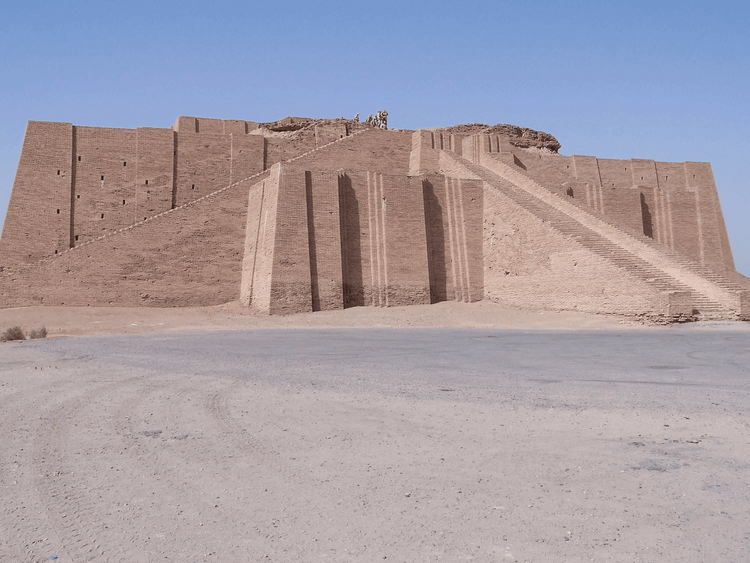Mesopotamia: The Cradle of Civilization Explained

Table of Contents
- Geographical Significance of Mesopotamia
- Timeline and Historical Periods
- Groundbreaking Inventions
- Contributions to Civilization
- Religion and Beliefs
- Trade and Economy
- Climate and Decline
- Decline of Mesopotamia
- Legacy and Relevance Today
- Why is Mesopotamia called the Cradle of Civilization
- Foundational Achievements
- Cultural and Religious Impact
- Lasting Influence
- Explore Creativity with PlanetSpark
- FAQs About Mesopotamia
When we think of the earliest advancements of human civilization, Mesopotamia often stands out as the most important region. Known as the "Land Between Rivers," this ancient territory was nestled between the Tigris and Euphrates rivers. These rivers not only provided fertile land but also enabled trade, irrigation, and the birth of organized communities. Stretching across what is now Iraq and parts of Syria and Turkey, Mesopotamia gave rise to the world’s earliest cities, governments, writing systems, and monumental innovations.
Just as Mesopotamia laid the foundation for modern civilization, PlanetSpark helps children lay a strong foundation in communication through its Creative Writing Courses. With live 1:1 sessions, AI-based feedback, gamified modules, and structured guidance, PlanetSpark transforms young minds into confident storytellers. Whether your child dreams of writing the next bestseller or simply wants to express themselves better, PlanetSpark's comprehensive platform makes that journey enjoyable and effective.
Geographical Significance of Mesopotamia
The word "Mesopotamia" comes from the Greek, meaning "between rivers." The Tigris and Euphrates rivers provided fertile soil due to annual flooding, making the region ideal for agriculture. This abundance allowed people to settle, farm, and eventually build thriving urban centers like Ur, Uruk, and Babylon.
The land's fertility and accessibility made Mesopotamia a cultural and economic hub. Trade routes passed through the region, connecting it to the Indus Valley, Egypt, and the Mediterranean. These exchanges of goods and ideas fostered a cosmopolitan society where innovation thrived.
Environmental Challenges
While the rivers offered life-giving resources, they also posed challenges. Floods could be unpredictable and destructive. The Mesopotamians developed extensive irrigation systems and canals to manage water flow and maximize agricultural productivity. This early form of environmental engineering reveals the ingenuity and adaptability of Mesopotamian society.
Timeline and Historical Periods
Mesopotamian history spans several millennia and includes numerous dynasties and empires. Major periods include:
1. Sumerian Period (c. 4500–1900 BCE)
The Sumerians were the first known inhabitants of Mesopotamia. They founded some of the world’s earliest cities, such as Uruk, Lagash, and Eridu. Uruk, with an estimated population of 40,000–80,000 at its peak, is considered the world’s first major city.
The Sumerians invented cuneiform, the earliest form of writing, inscribed on clay tablets using reed styluses. This writing system began as pictographs and evolved into wedge-shaped symbols representing syllables and words. These tablets recorded trade, literature, and administrative decisions, marking the beginning of recorded history.
2. Akkadian Empire (c. 2334–2154 BCE)
Sargon of Akkad created the first known empire in world history by uniting Sumerian city-states under one rule. The Akkadian Empire centralized its administration and established a postal system, efficient governance, and standard weights and measures.
The Akkadians adopted Sumerian writing and culture but used their own Semitic language. This fusion laid the groundwork for future Mesopotamian civilizations. Sargon’s empire extended from the Persian Gulf to the Mediterranean, showcasing Mesopotamia’s growing influence.
3. Babylonian Period (c. 1894–539 BCE)
Babylon rose to prominence under King Hammurabi (c. 1792–1750 BCE), known for the Code of Hammurabi—the first written legal code. Inscribed on a basalt stele, the code consisted of 282 laws governing commerce, property, family relations, and crime. It introduced the concept of presumption of innocence and emphasized justice, although punishments varied by social class.
The Babylonians made significant advances in astronomy, mathematics, and literature. They used a base-60 number system (from which we get 60 seconds and 60 minutes) and accurately tracked celestial movements. The Babylonian creation myth, "Enuma Elish," reflects their complex cosmology and religious beliefs.
4. Assyrian Empire (c. 900–612 BCE)
The Assyrians, from the north of Mesopotamia, developed a highly militarized and bureaucratic empire. They excelled in siege warfare, iron weaponry, and psychological tactics.
King Ashurbanipal (reigned 669–631 BCE) created the Library of Nineveh, containing over 30,000 clay tablets. This library preserved Sumerian, Akkadian, and Babylonian texts, offering modern scholars invaluable insights into Mesopotamian culture.
5. Neo-Babylonian Empire (c. 626–539 BCE)
Under Nebuchadnezzar II, Babylon experienced a renaissance. The king rebuilt the city with grand architecture, including the Ishtar Gate and the Hanging Gardens (one of the Seven Wonders of the Ancient World). This period also witnessed the Babylonian Captivity of the Jews after the conquest of Jerusalem.
Babylon's eventual conquest by Cyrus the Great of Persia in 539 BCE marked the end of Mesopotamian political dominance, but its cultural legacy endured.

Groundbreaking Inventions
Mesopotamians were master innovators. One of their most notable inventions was the wheel, initially created not for transportation, but for pottery. Later, it revolutionized transport and engineering through its use in chariots and pulleys.
Other incredible contributions include:
- The first known law codes
- Development of cursive writing
- The earliest examples of literature, such as the Epic of Gilgamesh
- Ancient sanitation techniques
- The invention of the seeder plough
- The discovery of how to extract and work with copper
- The oldest known recipe for beer
These innovations laid the groundwork for modern technologies and societal structures.
Join PlanetSpark’s Creative Writing Course and watch their imagination soar. Book a FREE trial class today!
Contributions to Civilization
Mesopotamia made lasting contributions to numerous fields, many of which still impact our lives today.
Writing and Literature
Cuneiform writing allowed for the preservation of laws, literature, and commercial transactions. The most famous literary work from Mesopotamia is the "Epic of Gilgamesh," a heroic saga exploring mortality, friendship, and the quest for meaning. This epic predates Homer’s writings and is considered one of the earliest works of world literature.
Law and Governance
The Code of Hammurabi established a framework for justice, including detailed regulations on property rights, wages, contracts, and family law. Its principle of "an eye for an eye" influenced later legal systems, including those of the Hebrews and Romans.
Mathematics and Astronomy
Mesopotamians developed advanced mathematical concepts, including multiplication tables, geometry, and algebra. They divided the hour into 60 minutes and the circle into 360 degrees.
In astronomy, they accurately predicted lunar eclipses and documented planetary movements. Their records formed the basis for later Greek and Islamic astronomical discoveries.
Architecture and Urban Planning
Ziggurats, massive temple towers, dominated Mesopotamian cityscapes. These structures symbolized a bridge between Earth and the divine. Cities were meticulously planned with residential areas, marketplaces, temples, and administrative buildings.
Materials like mud bricks were used for construction due to the scarcity of stone. Some palaces featured intricate wall reliefs and were adorned with glazed tiles, displaying remarkable artistry.
PlanetSpark’s curriculum nurtures creativity while building foundational language skills. Try a FREE creative writing class now!
Education and Schools
Mesopotamian education was primarily for scribes and priests. Schools, known as "edubbas," taught cuneiform, mathematics, literature, and religion. Students underwent rigorous training to become record-keepers, accountants, and officials.
This formal education system created a class of literate elites who played key roles in governance and cultural preservation.
Religion and Beliefs
Religion permeated every aspect of Mesopotamian life. People believed that gods controlled natural forces and human fate. Each city had a patron deity; for example, Marduk was the chief god of Babylon.
Temples, or ziggurats, were the religious centers where priests conducted rituals and offered sacrifices. Mesopotamians practiced divination, interpreting omens from dreams, animal entrails, or celestial events to make decisions.
The afterlife was seen as a dreary underworld called Kur. This belief shaped ethical behavior and the structure of burial rituals.
Trade and Economy
Mesopotamia lacked natural resources like timber, metals, and stone, prompting trade with neighboring regions. They exchanged grain, textiles, and crafted goods for copper (from Oman), timber (from Lebanon), and precious stones (from India and Iran).
Trade was facilitated through rivers and overland caravans. Records inscribed on cuneiform tablets reveal detailed accounts of business transactions and contracts, demonstrating early forms of market economies.
Climate and Decline
Despite its earlier success, Mesopotamia faced environmental challenges. Frequent flooding, followed by long droughts, disrupted agriculture. Over time, the rivers that once nourished the region began to dry up. Today, climate change and overuse threaten to dry the Tigris and Euphrates completely by 2040.
After the 7th century CE, Arab Muslims conquered the region. Initially resisted, their traditions gradually merged with local beliefs, leading to a rich fusion of cultures.
Empower your child to write stories, essays, and poems with clarity and creativity. Claim your FREE trial session today!
Decline of Mesopotamia
The decline of Mesopotamia was not the result of a single event, but rather a long and complex process influenced by a combination of environmental, political, economic, and military factors. Despite its remarkable innovations and early dominance, the once-thriving land between the rivers gradually succumbed to internal weaknesses and external pressures.
1. Repeated Invasions and Shifting Powers
One of the primary reasons for Mesopotamia’s decline was the series of invasions by powerful neighboring civilizations. By the end of the second millennium BCE, the region had become a target for conquest due to its wealth, strategic location, and fragmented city-state structure.
Hittite Invasion (c. 1595 BCE): The Hittites from Anatolia invaded Babylon, looting the city and severely weakening the power of the Babylonian kingdom. Although the Hittites did not occupy Babylon permanently, their raid marked a significant disruption in the political stability of the region.
Elamite Conquests: The Elamites, based in what is now southwestern Iran, frequently clashed with Mesopotamian powers. In the 12th century BCE, they captured Babylon and carried off the statue of the god Marduk—a profound symbolic blow to the Babylonian state.
Assyrian Decline and Fall (7th century BCE): Although the Assyrian Empire became the dominant Mesopotamian power for centuries, it too fell victim to internal strife and external coalitions. The combined forces of the Babylonians and Medes sacked Nineveh in 612 BCE, leading to the eventual fall of Assyria.
Persian Conquest (539 BCE): The final blow to Mesopotamian autonomy came when Cyrus the Great of Persia conquered Babylon. While Persian rule respected many Mesopotamian customs, the region was now integrated into a larger empire and lost its status as an independent cultural and political center.
2. Environmental Degradation
Environmental factors also played a critical role in Mesopotamia’s downfall. Over centuries, the intensive irrigation systems that supported agricultural productivity began to backfire.
Salinization of Soil: The constant flooding and poorly managed irrigation led to the buildup of salt in the soil, especially in southern Mesopotamia. Over time, this drastically reduced the fertility of the land. By around 2100 BCE, crop yields, especially for staples like wheat, had declined significantly, leading to food shortages and weakening the economic base of city-states.
Deforestation and Soil Erosion: Trees were cut down for fuel and construction, especially in the northern areas. This deforestation contributed to soil erosion and desertification, reducing arable land and increasing vulnerability to flooding.
Changes in River Courses: The unpredictable shifts in the courses of the Tigris and Euphrates rivers sometimes led to the abandonment of entire cities. As rivers shifted or silted up, ports and irrigation systems became obsolete, cutting off vital access to water and trade.
3. Political Fragmentation and Infighting
Mesopotamia never truly became a unified nation-state. Throughout its history, it remained a patchwork of city-states like Ur, Uruk, Lagash, and Babylon, each with its own ruler and ambitions.
Rivalries Among City-States: While this decentralized system initially fostered competition and innovation, it eventually made Mesopotamia vulnerable. City-states often waged wars against each other, depleting their resources and weakening their defenses.
Succession Crises and Civil Wars: Many dynasties fell victim to internal disputes. Royal succession was often contested, leading to civil wars that distracted rulers from external threats.
Lack of Unified Defense: When foreign invaders threatened, there was often no coordinated response from Mesopotamian cities. This disunity allowed outside powers to conquer one city at a time.
4. Economic Strains and Decline in Trade
Mesopotamia’s economy, heavily reliant on agriculture and trade, also faced serious challenges.
Collapse of Long-Distance Trade Routes: As political instability grew across the region, long-distance trade with the Indus Valley, Egypt, and Anatolia diminished. The economic prosperity that had fueled city growth declined.
Inflation and Currency Issues: Some evidence suggests that during later periods, inflation and resource scarcity led to economic distress. Tribute demands from occupying empires further strained the local economies.
5. Cultural Legacy and Intellectual Continuity
Despite the political and economic decline of Mesopotamia as a dominant power, its cultural and intellectual achievements lived on.
Admiration from the Greeks: Greek historians like Herodotus were fascinated by Babylonian science, astronomy, and architecture. Greek mathematicians and astronomers borrowed heavily from Mesopotamian knowledge, particularly in understanding the movements of celestial bodies.
Preservation by Islamic Scholars: During the Islamic Golden Age (8th–13th centuries CE), Muslim scholars translated and preserved many cuneiform-inspired mathematical and astronomical ideas into Arabic. Centers of learning in Baghdad, such as the House of Wisdom, ensured that Mesopotamian knowledge remained part of the academic world.
Archaeological Rediscovery: In modern times, archaeological efforts by scholars and explorers in the 19th and 20th centuries brought Mesopotamia’s forgotten cities, texts, and temples back into public awareness, further highlighting the civilization’s enduring influence.
Legacy and Relevance Today
Mesopotamia’s innovations continue to form the foundation of modern civilization. From pioneering legal systems to urban planning, written literature, and formal education, their contributions still echo in the world we live in today.
Innovations That Still Shape Our Lives
Legal Systems
Introduction of codified laws like the Code of Hammurabi
Concepts of justice, punishment, and civic duty
Urban Planning and Infrastructure
Organized city layouts with roads, canals, and marketplaces
Public infrastructure such as temples, ziggurats, and irrigation systems
Timekeeping and Mathematics
Base-60 number system
Influence on how we measure time: 60 seconds in a minute, 60 minutes in an hour
Astronomy and Calendars
Observation-based calendars
Mapping of celestial bodies for timekeeping and agriculture
Influence on Modern Institutions
Government and Administration
Bureaucratic systems, centralized leadership
Taxation, census-taking, and civic planning
Education and Literature
Establishment of scribal schools
Literary masterpieces like the Epic of Gilgamesh, still studied for themes of mortality, leadership, and friendship
Continued Relevance
For students, historians, and lifelong learners, exploring Mesopotamia:
Offers insight into the origins of contemporary systems
Highlights how ancient societies navigated universal human concerns
At PlanetSpark, children learn to craft compelling narratives with structure and flair. Start with a FREE trial class!
Why is Mesopotamia called the Cradle of Civilization
Mesopotamia is referred to as the "cradle of civilization" because it was the birthplace of nearly all fundamental aspects of organized human life.
Geographic Advantage
Fertile Crescent
Located between the Tigris and Euphrates rivers
Rich soil enabled the first large-scale agriculture
Permanent Settlements
Food surpluses allowed for urban development
Cities like Ur, Uruk, and Babylon thrived as early as 3000 BCE

Foundational Achievements
Writing and Record-Keeping
Invention of cuneiform—the world’s earliest known writing system
Used for trade records, laws, stories, and astronomical data
Mathematics and Engineering
Introduction of geometry and algebra for land division and architecture
Creation of irrigation systems and large-scale buildings
Law and Governance
Hammurabi’s Code: one of the first written legal systems
Early examples of taxation and civic obligations
Trade and Economy
Complex trade networks across Mesopotamia and beyond
Use of standardized weights and measures
Cultural and Religious Impact
Religion
Polytheistic belief systems centered around temple complexes
Introduced concepts like divine kingship and moral justice
Social Organization
Clear hierarchies: kings, priests, scribes, merchants, farmers
Roles and responsibilities are defined in law and tradition
Lasting Influence
Mesopotamia set a precedent for future civilizations in:
Governance and law
Urban life
Scientific thinking
Religious and moral philosophy
Because Mesopotamia provided the first recorded instances of these complex societal structures, it rightfully earns its title as the cradle of civilization.
Explore Creativity with PlanetSpark
Just as Mesopotamia was a pioneer in writing and storytelling, PlanetSpark is the modern cradle for young minds to explore their creative potential. Here’s why PlanetSpark’s Creative Writing Courses are the best for your child:
- 1:1 Personal Trainers: Certified communication experts tailor sessions to match your child's learning style, pace, and personality.
- Personalised Curriculum: Unique roadmaps identify grammar, fluency, and confidence gaps and help kids improve step-by-step.
- SparkX AI Analysis: Tracks video-based speaking performances for posture, clarity, grammar, and confidence.
- AI-Led Practice: Children can practise speeches and stories with virtual coaches who provide instant feedback.
- Spark Diary: A digital journal to foster daily creative writing habits.
- Gamified Learning: Fun quizzes, vocabulary games, and grammar challenges make writing enjoyable.
- Parent-Teacher Meetings: Regular updates and strategy sessions ensure complete transparency.
- Progress Reports: Detailed feedback with improvement plans.
- Creative Clubs: Debate, comedy, podcasting, and writing clubs help kids collaborate and showcase their talents.
- Sparkline: A secure platform where kids share their work and get peer appreciation.
- Showcases and Contests: Regular events give children a chance to shine on a public stage.
- SparkBee & SparkShop: Tools and resources that support grammar, writing, and storytelling with engaging content.
Ready to nurture your child’s storytelling spirit? Book a FREE trial session with PlanetSpark today!
FAQs About Mesopotamia
1. What were the four major kingdoms in Mesopotamia?
The Akkadian, Babylonian, Neo-Babylonian, and Assyrian Empires.
2. What were the main stages of Mesopotamia's history?
From the Pre-Pottery Neolithic and Chalcolithic periods to the First Millennium BC, which includes Classical Antiquity and Late Antiquity.
3. What is the culture of Mesopotamia known for?
Settled communities, the invention of writing, the domestication of animals, and urban planning.
4. What were the cultural contributions of Mesopotamia?
Writing, astronomy, mathematics, legal systems, medicine, road networks, and beer making.
5. What was the religion in Mesopotamia?
Polytheistic, with worship of Earth, Sky, and Wisdom gods.
6. Why is Mesopotamia called the cradle of civilization?
It was home to the first cities, laws, writing systems, and innovations that shaped modern society.
7. How did Mesopotamia influence modern education and learning?
By introducing written records, structured law codes, and the concept of libraries, precursors to modern education systems were established.
Personalized Communication Report
Record a video to get a AI generated personalized communication report for your child

Hi There, want to try these
tips for your child with
LIVE with our expert coach?
Let's check your child's
English fluency
